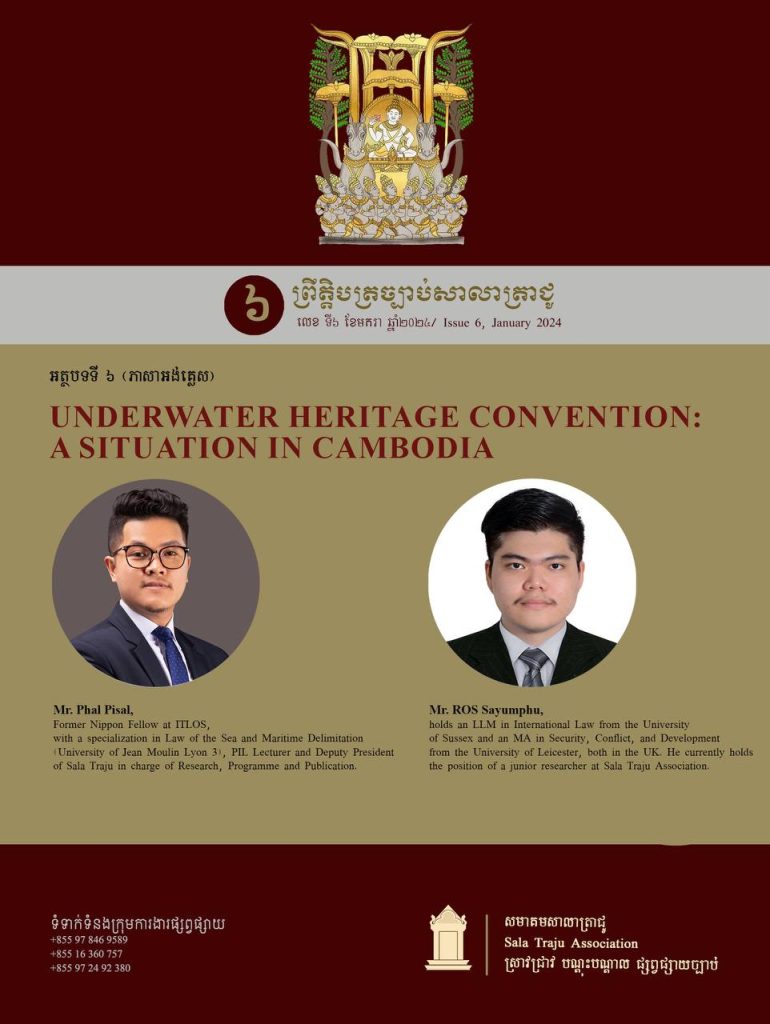
INTRODUCTION
One of the topics that has been gradually becoming more important over the past decade is the preservation of underwater cultural heritage. Underwater cultural property is not possible to commit with land’s cultural heritage, but the significance of what is there could be overlooked or placed second to the recently introduced topic. Although the process of decolonization and national building and development may consume the majority of the resources, experts, and time of developing nations like Cambodia, this does not mean that other states and regions are not aware of the significance of the idea of protecting cultural property (Winter, 2008). This does not mean that other states and regions are not aware of the significant. Cambodia, in particular, has been through a number of different internal conflicts. At the same time, having a number of different temples and cultural properties on land that are dispersed all over the map can make it difficult for this nation to participate adequately and as equally as possible in all matters. In light of this, Cambodia is one of a kind because, despite the fact that the country is preoccupied with other concerns, such as the preservation of the land cultural property, Cambodia has been actively and aware of the underwater cultural property that needs to be preserved as well by ratifying the UNESCO convention on protecting underwater cultural heritage (Stark, 2020). This demonstrates Cambodia’s commitment to the preservation of both land and underwater cultural property. Yet, Cambodia’s will alone may not be sufficient and the growing threats toward the underwater cultural heritage sparks concern for the whole international community (Khakzad, 2014). In light of this, the first section of this article will attempt to provide an overview of the underwater cultural heritage found throughout the world and the region that could potentially have an effect on Cambodia. In the following section of the article, we are going to focus specifically on the cultural heritage situation in Cambodia’s underwater environments. In the last part of this article, we’ll take a look at the legal rights and obligations that Cambodia has both domestically and internationally.
